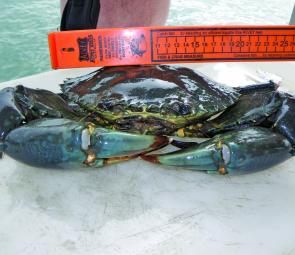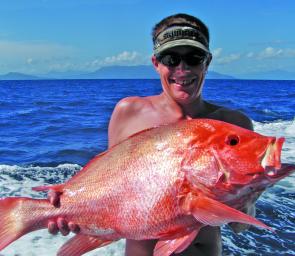July is typified by a combination of picture perfect northern winter days and howling sou’esters, the proportion of which is anyone’s guess. Last year was predominantly howlers, but 2009 had long periods of perfection, so my hope is definitely for a repeat of 09.
Whatever the mix, an angler’s best strategy is to be geared up, with leave passes signed off, and be ready to take advantage of whatever weather windows present themselves. Generally speaking, July is a month to look east whenever possible, as the estuary fishing for tropical northern species has cooled off; like the temperature.
Southern anglers often make the mistake of coming from the seriously cold south, to T-shirts and thongs in the middle of the day, and think it’s still summer up here. Check out the locals – if they are wearing jumpers, then it’s our version of deep winter and tropical fish, also being locals, feel the same way.
The mackerel season will be in full swing, with Spaniards spread from the inshore islands and wrecks to the outer reef and the lesser mackerel predominantly closer in around the harbour leads, inshore wrecks, islands and reefs. Trolling tends to be the most productive method, but once fish are located, switching to anchoring or drifting pillies, gar or live baits will often come up trumps.
Trolling live baits is my number one producer and always my preferred option, if I can get suitable bait. Bait size is not as important as species. Remember the old saying, “You catch elephants with peanuts.” That certainly applies to Spanish mackerel, with my top trolling bait being sardines. Other great livies are mullet, gar, pike, grinner, yellowtail, hussar, fusilier and any species of small trevally. Troll them as slow as your motor will accommodate.
Islands such as Fitzroy, Double, High and the Frankland group are great close inshore spots to try for Spaniards. If you don’t know where to fish at these locations, pick a picture perfect day and go out with trolling gear at the ready. There will be a flotilla doing the same thing, if they are on the bite. At the reef, any pinnacle with good current and bait showing on the sounder will hold mackerel.
There will also be the odd cobia around to give the arms a real work out. Always bring any shark looking fish right to the boat for a proper ID, as it’s amazing how often cobia are mistaken for sharks, especially in water that isn’t crystal clear. Light tackle game fishing will be well underway, with mackerel the main catch, but there will be a few small blacks making it to the tag pole.
The small boat brigade will be nailing the lesser mackerel at the Cairns Harbour leads, inshore wrecks and reefs, with the odd Spaniard causing mayhem as it tears through the fleet. Winds are often lighter inshore early in July, so a dawn raid for doggies is possible, even when the forecast is for 20 knots offshore.
The more southerly the wind direction, the more pronounced the difference in wind strength inshore, compared to out wide. The best plan of attack is to leave the boat ramp well before daylight and drop anchor or troll baits at the first sign of light. There is usually a window of an hour or so before the wind starts to pick up. If the mackerel are on the chew, that is all the time you will need to get a feed.
Once the wind kicks, troll towards shore until you are in calmer water. At the Double Island wrecks, a good strategy is to head around the northern side of Double Island on the way home and across into the bay at Palm Cove, then zip along close to shore all the way back to Yorkeys Knob boat ramp. It’s a bit of a long way round but a magnificent scenic route. You are running across the swell to Double Island, then in the lee of the island and headlands, making it quite comfortable to be on the plane all the way home. Out at the harbour leads, you are pretty exposed most of the time, so trolling back to the marina is the best bet.
Offshore, small and large-mouth nannygai can be prolific in the deeper waters. Closer to the reef, coral trout, reef jack, and sweetlip will be part of the catch, with spangled emperor the main event.
The estuaries and Cairns harbour will still produce the odd jack, fingermark and barra but the main action will come from bream, flathead, grunter and queenies. Mud crabs will also be on the menu, especially in the lead up to the full moon on the 15th. Unless there has been an unseasonal fresh, they will mostly be upstream in the smaller arms of the creeks. Trevally and queenfish will be patrolling the deeper holes and are most active on the incoming tides.
The time to target the tropical trophy fish in winter is also the same weather conditions to be offshore chasing mackerel and reds, so it’s often a bit of a quandary as to which plan of attack to adopt. Base your decision on the word on the water.
If the action has been offshore, then head east. If there are whispers of barra and jacks being taken, then stay inshore. Make it a double header, with a dawn raid for doggies washed down with a spot of barra fishing as the day warms up. Add crabs to the menu and it’s party on!
Reads: 6347
Hopefully there will be a few muddies of this calibre getting potted this month.

Monster bigmouth nannygai, like this beauty taken on board Aqua Cat Charters, will be making it to the deck when the weather allows.




